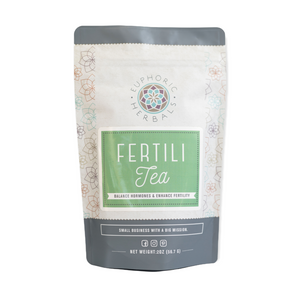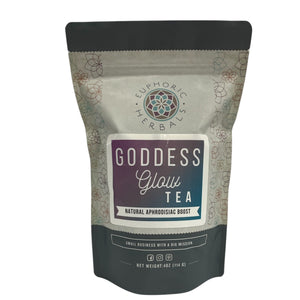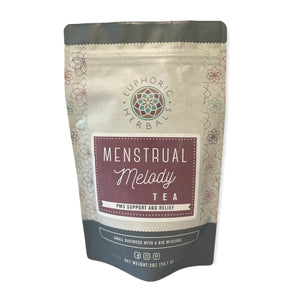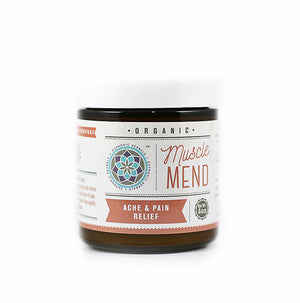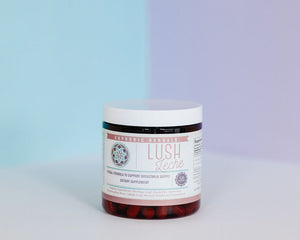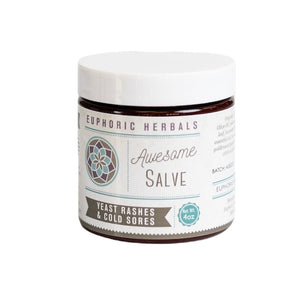Foraging is an ancient craft that used to be a way of life (and still is in some parts of the world). Today, many are feeling the urge to return to foraging and discover how to harvest the plants that nature offers to us.
If you dip your toes into foraging, you'll most likely be amazed to discover how many edible and medicinal herbs are available right outside your door. However, it is important to forage the correct way to protect yourself and the plants.
Here's a simple guide on how to start foraging, what not to do, and some of the best herbs to look for as a beginner.
Why Forage? Benefiting from the "Weeds"
Though foraging can involve harvesting bark carefully from a tree or searching for edible mushrooms, it most often involves collecting the "weeds" that spring up at different times of the year.
Of course, "weed" is a term that simply means a plant growing in a place where it isn't wanted. Many of the most valuable and safe-to-use herbs, like dandelion, are considered weeds, but herbalists know their true potential.
And while you can find many or all of these herbs/weeds for sale at an herbal supplier, foraging gives you a unique chance to connect with the land and with the herbs you use.
It gives you the opportunity to learn what each plant looks like through all of its growth stages instead of just how it appears after being harvested and dried.
You also get the chance to incorporate fresh herbs more often into your diet and herbal preparations, and wild weeds are frequently more potent than their cultivated counterparts.
For many, foraging is a way to take a break from a world of technology and screens to reconnect with nature and discover what grows locally. The fact that plants are incredibly nutritious and support your health is just a bonus!
How to Forage: The Basics

Foraging is a craft that must be honed, so it's impossible to give you all the details on how to do it in one article. This is a basic outline that you can work from and will hopefully inspire you to learn more.
As you get started on this path, here's a general approach you can take:
- Decide where to forage-- You'd be surprised how many herbs can be foraged from your backyard, but if you don't have a large property, you may want to venture further afield. Consider places like wooded areas, meadows, and parks, but only go where you have permission to collect plants.
- Decide which plants to look for-- If you become an expert at plant identification, you can go foraging without a set plan and harvest whatever you come across. As a beginner, however, it's better to have certain plants you want to look for to be sure of your identification. Consider getting a guide book for edible plants in your local area and choose specific ones to look for based on what season it is. (Keep reading this post for herb foraging suggestions.)
- Take tools with you-- Some plants can be harvested by hand, but using the right tools is usually better for the health of the plant and easier on you. Consider taking a basket and pruners or scissors at minimum as well as your plant identification book. Always make sure your tools are sanitized to avoid spreading pathogens to wild plants.
- Identify carefully-- When you find a potential herb to harvest, double and triple check your identification first! Toxic plants can mimic edible ones, so make sure the plant you are interested in matches up to its description on every characteristic. When in doubt, do NOT harvest.
- Harvest with restraint-- Once you are sure of proper identification, the next step is to decide whether the plant population is large enough for ethical harvesting. You only want to collect plants that are widespread and abundant so that what you take will not negatively affect the population as a whole. If enough plants are present, collect what you are after (leaves, stems, flowers, etc.) with restraint, spreading your harvest over several plants so that each one will be able to regenerate.
- Enjoy your harvest-- Take your newly foraged herbs back home and enjoy eating them or using them to make herbal remedies!
What Not to Do While Foraging

Now that you know the basics of how to start foraging, here are some important guidelines about what you shouldn't do. There's no need to forage with fear, but a little caution is a good friend on this journey!
- Don't harvest without permission-- If you want to forage on private land, make sure you have the permission of the landowner before doing so (especially if that person is your neighbor!). You may need a permit to harvest from governmental land, like national parks, so do a little research before foraging.
- Don't harvest at-risk plants-- Certain herbs, particularly natives ones, are considered at risk because they have been overharvested in the past or are facing habitat destruction. Use a resource (like the United Plant Savers website) to determine whether a plant is at-risk or not. If it is, do NOT harvest. Either try growing it yourself or buy from an ethical supplier.
- Don't harvest if you aren't positive about identification-- Always remember that nature produces poisonous plants as well as edible ones. Never harvest if you are unsure about the identification of a particular plant. Take a picture and ask an expert about it, but leave it where it is.
- Don't harvest where pesticides have been sprayed-- Weedy herbs can grow just about anywhere, but that doesn't mean you should forage for them anywhere. Avoid collecting plants growing by the road because they are often exposed to chemicals from traffic and herbicides. Learn more about other locations and possible chemical usage before foraging.
- Never harvest all of a plant population-- Make sure you always leave more plants behind than you collect. Not only do you want to ensure survival for each specific herb, many animals depend on leaves, shoots, and berries for survival.
Herb Suggestions for Beginner Foragers

Non-native plants/weeds are ideal for foraging because they tend to grow enthusiastically and may endanger native plants. Some native herbs are also abundant at certain times of year, making them a great option for foraging.
Here's a list of some herbs/plants to look for your first time out that are fairly easy to identify but remember that the best choices will vary based on where you live:
- Dandelion (spring, early summer)
- Nettle (spring, use gloves!)
- Chickweed (spring)
- Garlic mustard (spring)
- Wild violet (spring)
- Lamb’s quarters (spring)
- Plantain (spring, summer)
- Raspberry leaves (summer)
- Roses (summer)
- Red clover (blossoms, summer)
- Chicory (summer, fall)
- Burdock (root, fall or early spring)
- Pine needles (fall, winter)
- Juniper berries (fall, winter)
Foraging vs. Buying Herbs
Foraging is an incredible skill to cultivate, but there are times when it's better to buy your herbs and spices from an ethical supplier.
For example, specific herbs may not grow in your region or you may need a larger supply of an herb than you can ethically harvest in the wild. It's also highly likely that you'll need an herb when it's out of season, which is when having a go-to herb shop makes life easier.
At-risk herbs should be purchased rather than harvested in the wild, but make sure you buy them from a supplier who sustainably sources their herbs.
Euphoric Herbals offers a wide range of quality, ethically sourced herbs that can supplement your newly learned foraging skills. But the more you forage, the more you'll be able to fill up your cupboard with herbs you've handpicked!
Disclaimer: This post is for informational purposes only. It does not constitute medical advice and should not be substituted for medical advice. Please consult your health care provider, herbalist, midwife, or naturopathic physician before taking herbs, supplements, etc. Here's the link to our full disclaimer.






















































